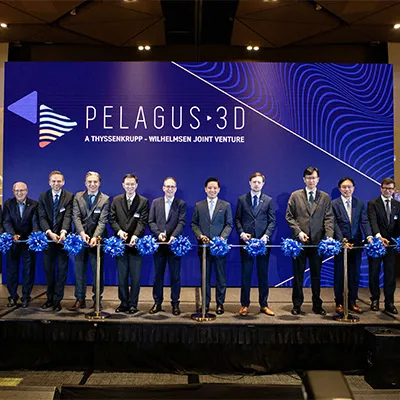From the invention of the steam engine to the digitalisation of production processes with Industry 4.0, the manufacturing sector has always been the backbone of the global economy. With large scale production that facilitates the movement of goods and products, societies are highly dependent on the manufacturing industry to support the expansion of trade and commerce, which is essential for economic development. To achieve widespread and sustainable economic growth, a robust and future-ready manufacturing base is a prerequisite.
In recent years, the manufacturing sector has gone through rapid changes due to the accelerated adoption of digital technologies and shifting economic environment with many organisations struggling to keep in step with such changes.
With the pandemic impacting almost every segment of the industry – from a shortage of raw materials due to disrupted supply chain to limitations in manpower because of movement control orders and extended lockdown, many businesses within the manufacturing sector are now revisiting their modernisation plans and looking to accelerate digitalisation strategies. Manufacturers are embarking on a digital transformation journey to challenge their approaches to sales, marketing and supply chain management and to increase operational efficiencies in their factory floor processes to improve business resilience and prepare for future disruptions.
Investing in Technology for a Resilient Manufacturing Industry
In Singapore, manufacturing is a major contributor to the country’s gross domestic product (GDP) and 12 percent of the labour force or about 450,000 employees are working in the manufacturing sector. To achieve the goal of growing Singapore’s manufacturing sector to SGD150 billion, while maintaining its current share of about 20 percent of GDP, the government has recently unveiled its plan to drive research and innovation in advanced manufacturing operations.
Moreover, the Singapore Economic Development Board (EDB), in partnership with leading technology companies, consultancy firms and industry and academic experts, created the Smart Industry Readiness Index (SIRI). Launched in 2018, this initiative was created to assist manufacturers of all sizes across the industry to start, scale and sustain their manufacturing transformation journeys to implement projects that support process automation, intelligence and connectivity.
As the manufacturing sector leverages Industry 4.0 technologies, organisations stand to gain several key advantages including efficient and cost-effective resource allocation, visibility at every stage of the supply chain with the help of enhanced machine monitoring, and access to key metrics which can lead to actionable insights and intelligence. By achieving high levels of efficiency and overall visibility, manufacturers can reduce downtime and respond to business needs in real-time.
Here are four key areas of focus for organisations looking to leverage technology to build a smart and connected factory:
- Operational pillars required for an Industry 4.0 transformation
Before embarking on a transformation journey, manufacturers need to take a hard look at business drivers, organisational change and technology transformation. By analysing these three operational areas, a future-proof Industrial Internet-of-Things (IIoT) infrastructure can be designed with features such as continuous monitoring of factory floor equipment and machine learning predictions for processes.
- Identifying use cases to enable Industry 4.0
It is also important to identify use cases across all the steps in the value chain, from suppliers to customers. An integrated approach involves prioritising use cases for piloting and planning a rollout across plant locations.
- The journey to creating a connected factory solution
The two main steps in building a connected factory involve firstly deciding which sensors and hardware to use for data collection within plant operations. The second stage involves developing a secure cloud landing zone that collects, analyses and stores data.
- Real-life smart factory transitions and how they did it
The strategies for a successful Internet-of-Things (IoT) project can be seen in action in the case study of medical device company Cerapedics as it transitioned to a smart factory. The first stage of the project involved building a proof-of-concept IoT solution that connected digital and analogue sensors, extracted data and sent it to a cloud hyperscaler for analysis and display. Following this, an optimal data model was defined and data ingestion, enrichment and storage pipeline was built providing real-time and historical analysis that is scalable, cost-effective and resilient to outages.
With digital innovations, manufacturing companies can connect their business, supply partners and channel partners so that they can have end to end visibility to stay ahead of customer needs, adapt to market trends and make changes that matter most to their customers. By investing in digital technologies, companies can gain a competitive edge during these difficult economic times — an edge that could become the most critical factor to ensure the survival of the business.
Companies should take this opportunity to build a dynamic IT ecosystem in which the businesses, supply partners and channel partners all share and collaborate transparently.
For Singapore, Industry 4.0 creates a window of opportunity to cement its role as a global manufacturing hub and solidify its manufacturing base. By adopting a solution that provides deep visibility across sales agreements, forecasting, customer relationship management (CRM), collaboration, analytics and more —local companies can take advantage of digitalisation and use an integrated approach to raise the level of competitiveness for local firms.
This article was written by Sandeep Bhargava, Managing Director of Asia Pacific Japan (APJ), Rackspace Technology.






